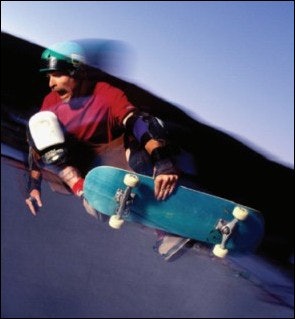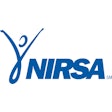Getting approval for a skate park is only half the challenge. The other half comes in designing and equipping it

In January, the Grandview (Mo.) Board of Aldermen gave its final blessing to a $150,000, 9,000-square-foot skate park in this Kansas City suburb of 25,000 people. Despite working with a small group of local youths, their parents and the city's Parks and Recreation Commission for the previous three years to gain approval of the facility, park supervisor Don Fowler's task was really just beginning. Now he and the city's Skate Park Committee have to determine what type of features and equipment to include in the park; whether they will be made of wood, steel or concrete; and whether the facility will be lit, fenced or supervised (or all three) - plus answer a plethora of other questions yet to even be asked.
Fowler got the wheels turning, so to speak, on a cold Saturday afternoon in March by inviting four skate park designers to participate in a four-hour demo session. Kids on the committee signed waivers and then had the opportunity to try out the companies' equipment and listen to presentations about their services. Fowler also distributed surveys to participants in an attempt to gauge their opinions about what they liked and didn't like about each vendor's products.
"Rarely can you get four vendors in one spot like that," Fowler admits, explaining that three of the four companies at the demo were already in the area attending the Missouri Park & Recreation Association's Annual Conference and Expo. "This was not a meeting where we invited the general public to come out and try the equipment. It was more to help with our decision-making process. It's one thing to see a little model, and it's another thing to actually try it out. I think the demo told the kids that this skate park is really going to happen."
That's a good thing, considering it was those kids who approached city officials with the request to build a facility for skateboarders and inline skaters in the first place.
User-group involvement is important - otherwise a community may be stuck with a facility no one wants to use - but skate park industry officials caution against relying too much on input from kids. "The most common mistake municipalities make is allowing 12-year-old kids, who have never been in a skate park, to design the park," says Heidi Lemmon of the Skatepark Association of the United States of America (SPAUSA). "It is good to work with local kids, but you must have a professional involved. A landscape architect who does not skate is not qualified."
Andrew Hines, owner of Hot Rails, an Orange, N.J.-based builder of wood and steel skate parks, agrees. "Take what the kids want," he says, "and roll it into a sensible approach."
Designing and building skate parks today is an art form. From beautiful swirling concrete bowls to steep and shiny steel ramps to authentic-looking park benches, fire hydrants and picnic tables, the facilities' elements are more attractive and better constructed than ever. Builders sign professional skaters not only to promote their products but also to assist in park design and construction. Just as young athletes who play traditional sports emulate pro football, baseball and basketball players, the skater crowd wants to follow the lead of Tony Hawk and other pro skateboarders. "There is a whole generation of kids out there for whom skateboarding is their main social and recreational activity," says Pat O'Connor, an insurance specialist at Indianapolis-based City Securities Group, the first company to begin insuring skate facilities, back in the early 1990s.
Almost 12.5 million Americans skateboarded in 2001 - practically double the number of those who did in 1999, according to SGMA International, which keeps track of such things. The majority of avid skateboarders, skating at least 52 days a year, are between the ages of 6 and 17, and more boys in that age group have hopped on a skateboard than have stepped onto a baseball field. Inline skaters (26 million) and BMX bicycle riders (3.6 million) are the other frequent users of skate facilities. With at least 1,000 skate parks in operation today, according to the SPAUSA, and as many as 2,000 more on the way in the next 18 months, many local officials are now facing the challenges of designing and equipping those facilities. (For more on the evolution of skate parks, see "Skate Nation," Oct. 2000, p. 67.)
A wealth of information is available via the Internet from park designers, builders and organizations, and there's even a publication called SkatePark magazine, which targets buyers and builders of skate parks, including parks and recreation officials, city and county officials, and landscape architects. The magazine also sponsors Launch!, an annual trade show for people in the market for a skate park. Additional information is available from any of 70 park manufacturers the SPAUSA has identified across the country. Many offer basic equipment and park layouts that can be tweaked to fit an individual facility's needs, while others specialize in custom designs. In addition to established independent builders of wooden, steel and concrete skate park equipment, a handful of well-known playground equipment manufacturers have arrived on the scene during the past two years with sister companies that make modular steel and wood designs. "We've made it easier for customers to plan, design and operate a successful skate park by providing education, tools and support," claims Bill Dietrick, general manager of Skatewave, a division of Landscape Structures Inc. in Delano, Minn. "These are key requirements for communities choosing to provide a safe and fun environment for skaters."
"Playground manufacturers have had both a positive and a negative impact on skate park development," says Michael McIntyre, founder of SITE Design Group, a skate park planner and developer based in Tempe, Ariz. "On one hand, the equipment they manufacture provides the possibility for communities that could not otherwise afford a skate park to have access to one. On the other hand, in some cases, you have a salesman who has never set foot on a skateboard designing and laying out a skate park."
Other builders aren't quite so diplomatic, with at least one veteran referring disdainfully to the modular systems as "Fisher Price" facilities.
In short, there's plenty of competition these days, as well as a fair amount of rancor. "We can't even all agree on what to call certain-shaped objects," laughs one builder.
That can be confusing for countless community leaders. Each park is different, with its own nuances and subject to specific requirements. "I can't tell you why a park might be good, but I know a good park when I see it," says Brett Barrick, Woodward Ramps & Rails brand manager for Huna Designs, a division of Playworld Systems. Keeping that in mind, the following are key considerations in skate park design and construction:
Materials and Features. A skate park is intended to provide a safe haven for a community's youths, keeping them away from cars, pedestrians and other elements of the urban landscape, such as park benches, railings and fire hydrants. Many of those obstacles (which skaters, in the absence of a skate park, utilize as riding surfaces) can be reproduced in skate parks via quarter-pipe ramps, elbowed ramps and banked walls to help build up speed in preparation for jumping and grinding on streetscape elements.
Other skaters prefer transition skating, which eschews urban obstacles for such curved features as bowls, shallow ditches called snake runs and U-shaped ramps called vert ramps and half-pipes. These structures feature a flat deck at the top of either side, with common dimensions ranging from about 4 to 12 feet wide, 16 to 36 feet high and 40 to 50 feet long.
The desired features in a skate park will help determine its construction materials - wood, steel or concrete - as much as other factors like climate and anticipated amount of use.
Wood parks are initially the most affordable, but maintenance costs can be high. Builders say wood parks vary in price, ranging from about $3 per square foot on up to $11 or more, and warranties are usually short. Able to be built on an existing concrete pad - an unused tennis court, basketball court or parking lot, for example - wood parks can accommodate most transitional-skating elements, including ramps, half-pipes and even bowls. The structures are also movable, allowing for fresh layouts. Moving the pieces around isn't always easy, though, and manufacturers recommend altering the park's landscape no more than once or twice a year - if that. Unfortunately, nails and screws can also loosen, posing a liability risk.
All wooden structures should be constructed of treated lumber and surfaced with a permanent skin resistant to both water and impact. A common surface material for wood (and steel) structures is a phenolic fiber laminate with a high strength-to-weight ratio, giving the surface added flexibility and greater protection against both users and the elements.
Steel-frame structures, similar to their wood counterparts, are bolted to a concrete pad for reconfiguration flexibility. Again, cost estimates vary, ranging from about $4 per square foot to more than $15. Warranties on steel parks are longer than they are for wood but not as long as they are for concrete.
Concrete parks are obviously permanent and allow for flowing integration of any shape into their design. Features of the surrounding landscape can be incorporated, as well, taking advantage of natural elevations, trees and other characteristics. Concrete parks can run from about $15 per square foot to $40 and beyond, limited only by the designers' imaginations.
Working with qualified professionals is more important in this type of skate park than in one using other materials. Lemmon recalls the story of a crew that brushed the finish of two $132,000 concrete bowls, rendering the surfaces unable to be skated upon. A concrete park also may require occasional patching of chips and cracks that sometimes occur because of temperature fluctuations.
Recent design developments include incorporating some street-skating obstacles in between or along the perimeter of concrete slabs, as well as setting up temporary equipment while a permanent park is constructed. For example, Purkiss Rose-RSI, a landscape architect and planner based in Fullerton, Calif., owns about a half-dozen pieces of modular equipment that it rents to communities for a fee, applying that to the project's final bill.
In addition to builders and designers, there are companies that provide turnkey facilities developed with local input and built, operated, maintained and insured by private companies. Another option is obtaining materials from a qualified builder and constructing the park as a community project, similar to the way in which many playgrounds have been built over the years.
In January, more than 200 Ben & Jerry's employees built a city-operated skate park at San Antonio's Spring Time Park in less than one day. The ice cream company donated $30,000 for the modular steel equipment and KaBOOM!, a national organization that funds volunteer efforts to build playgrounds and skate parks, organized the event. KaBOOM! was expected to publish a how-to guide for community-build skate parks this spring.
Both the SPAUSA and ASTM International are in the process of developing guidelines for equipment construction, design and safety - and both sets of guidelines should be available later this year. Jon Masone, deputy commissioner of the Department of Parks and Recreation in the Town of Hempstead, N.Y., is spearheading the ASTM effort and also working on creating standards for skate park fencing. When he was doing research for the $260,000, 11,000-square-foot skate park with wooden equipment that opened in his community last November, he was surprised to find no official standards, so he decided to develop some with ASTM using input from a variety of manufacturers.
Environment. By the time a municipality joins forces with a skate park designer and builder, local officials usually have a location in mind. The facility should be positioned in a visible, preferably residential area that's easily accessible to kids. A current park complex is ideal, near swimming pools, sports fields, basketball courts, playground equipment and other facilities - with room for expansion, if necessary. Plus, berms and other surrounding structures will help absorb the noise of skaters, wheels and boards.
One builder recounts the story of a community whose leaders are considering removing a skate facility because it was built in the back of an industrial park near railroad tracks, was not visible from any roads or along any public transportation routes, and did not receive routine police surveillance. "They put it in exactly the wrong place," the builder says.
Suburban Rails, a custom skate park builder based in Athens, Ohio, suggests taking advantage of unused public property located under a bridge or interchange. These areas are covered, providing protection from rain, snow and sun, and the noise blends in with traffic sounds. Other possibilities the company suggests include locating a series of small activity areas along an existing bicycle path and building a park in an abandoned railroad right of way.
Regardless of where the skate park goes, it should be near running water, public rest rooms, telephones and shade. It wouldn't hurt to have vending machines or convenience stores nearby, too. Grandview's skate park will be in a 50-acre park that also includes a new community center slated for completion in early 2004 - making it possible for parents and children to use the area at the same time. Some builders take the skate park concept a step further and create a complete outdoor environment with an entry plaza and other amenities. A well-appointed and centrally located skate park can draw users from more than 100 miles away, some builders say.
The layout of a skate park will depend on who will be using it. Obstacles for all users should be placed strategically, with elements for beginners and intermediate skaters segueing to structures for more experienced skaters. Within a year or two, though, McIntyre says rookie skaters will have mastered the beginning elements - so don't be afraid to push the limits of challenge within the park.
Every park should have at least three or four separate lines of traffic along which riders can travel without crossing paths. The amount of space between those lines of flow and a park's various obstacles, however, will depend on whether BMX riders are sharing the space with skateboarders and inline skaters.
In concrete skate parks, BMXers can just drop into a bowl wherever they want and pick up speed. But in parks with wood and steel elements, bikers require a lot more space to generate speed before executing a trick. Bike riders use ramps for launching themselves high into the air, rather than simply doing tricks and ollying - a Skateboarding 101 move in which a skater pushes down on the board's tail to launch the board into the air.
"Many skate park equipment manufacturers build ramps with decks as small as two feet deep," Nate Heydt from TrueRide Inc., a Duluth, Minn.-based builder, told SkatePark magazine earlier this year. "These small decks, combined with small parks and hundreds of users, are inadequate for municipal applications and create dangerous situations for the BMXers and skaters alike."
If a designer knows in advance that BMX riders will use the park, that firm can usually build features with stronger protective measures.
Decisions regarding fencing and lighting are based on an individual community's social fabric and best made after careful consideration by local leaders. Both elements can be added later, but it's important to consider fencing as an up-front option. Fences, which allow for easy posting of signage, have become popular features not so much for keeping users out of the park but for keeping runaway boards in. Fencing, however, won't necessarily prevent unauthorized users from sneaking into the park after dark.
In Hempstead, Masone says BMX riders (who aren't permitted in the town's skate park) toss their bikes over the 8-foot-high chain-link fence and then climb over themselves. The bikes' pedals and raised tire treads leave marks on the wooden ramps, requiring frequent repair, he says.
Hiring a supervisory staff and implementing user fees can also happen at a later date, after the park has been open for several months and officials begin to see usage patterns emerging. Keep in mind, however, that supervisors need not be paid staff members. A responsible park regular respected by his or her peers could do the job, as could a group of users who rotate duties. Only a handful of insurance companies specialize in skate parks, but they almost always require some sort of supervision before signing a new client, O'Connor says.
That said, one of the nation's largest skate parks, the $2.5 million, 40,000-square-foot Louisville (Ky.) Extreme Park, opened last year to much fanfare - not only because of its size and features (including a signature 24-foot concrete pipe), but also because it is open 24 hours a day with no supervision. Hundreds of riders use the park every day for free.
Liability. Communities have become unencumbered by liability concerns in recent years. Many states have some type of law on the books that releases municipalities from liability for skate park injuries. Plus, the U.S. Consumer Products Safety Commission continues to report that at least a half-dozen sports - ice hockey, football, basketball, soccer, baseball and volleyball - boast higher injury rates among participants than skateboarding. Fewer injuries means fewer lawsuits, although most skaters don't file a claim even if they are injured. "That's just the mentality of this user group," says Steve Rose, vice president of Purkiss Rose-RSI.
"A lot of cities and towns aren't concerned about liability issues one bit," O'Connor says. "They see a skate park as just one more public park and treat it accordingly."
Meanwhile, back in Grandview, Fowler remains on track, hoping to bring in another group of vendors before making a final decision on who will build his community's skate park. With an anticipated opening this fall, he's still got his work cut out for him. But Fowler's confident his diligent research will pay off. "The last thing the city wants to do," he says, "is build a skate park the kids don't want to use."




































